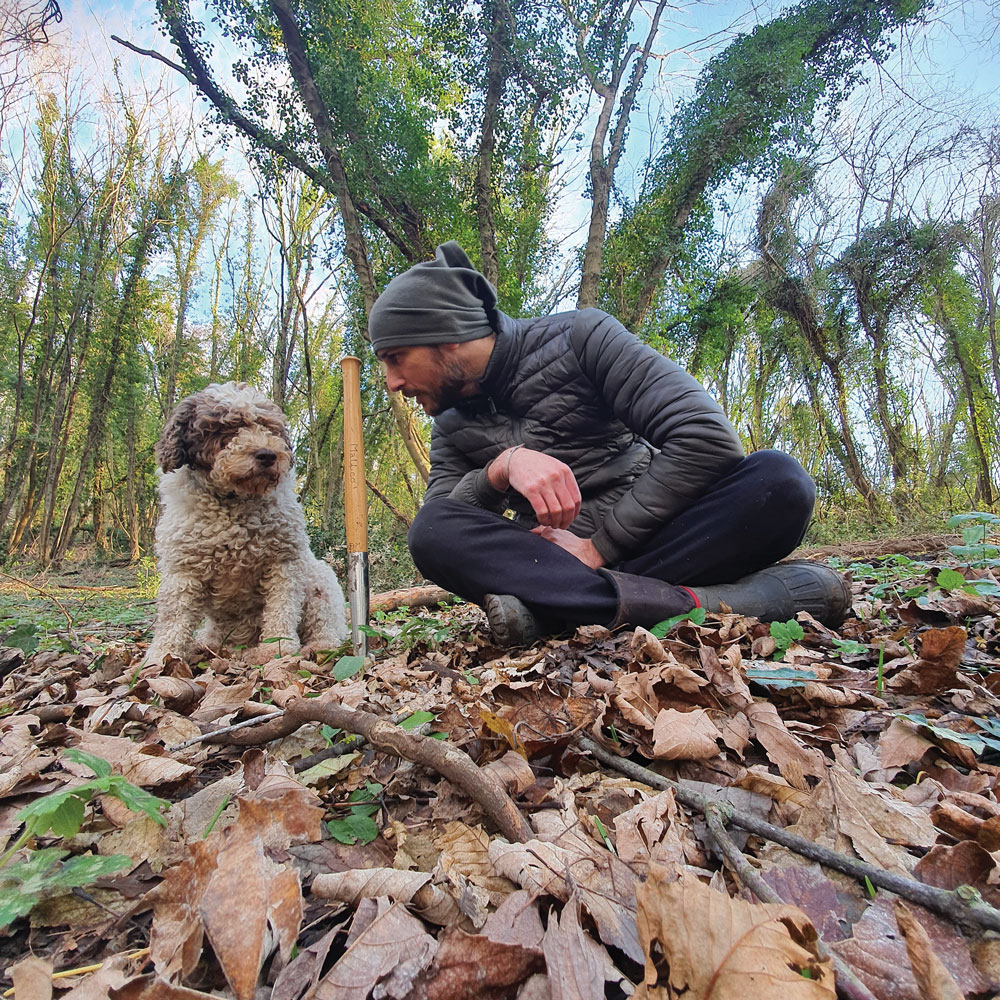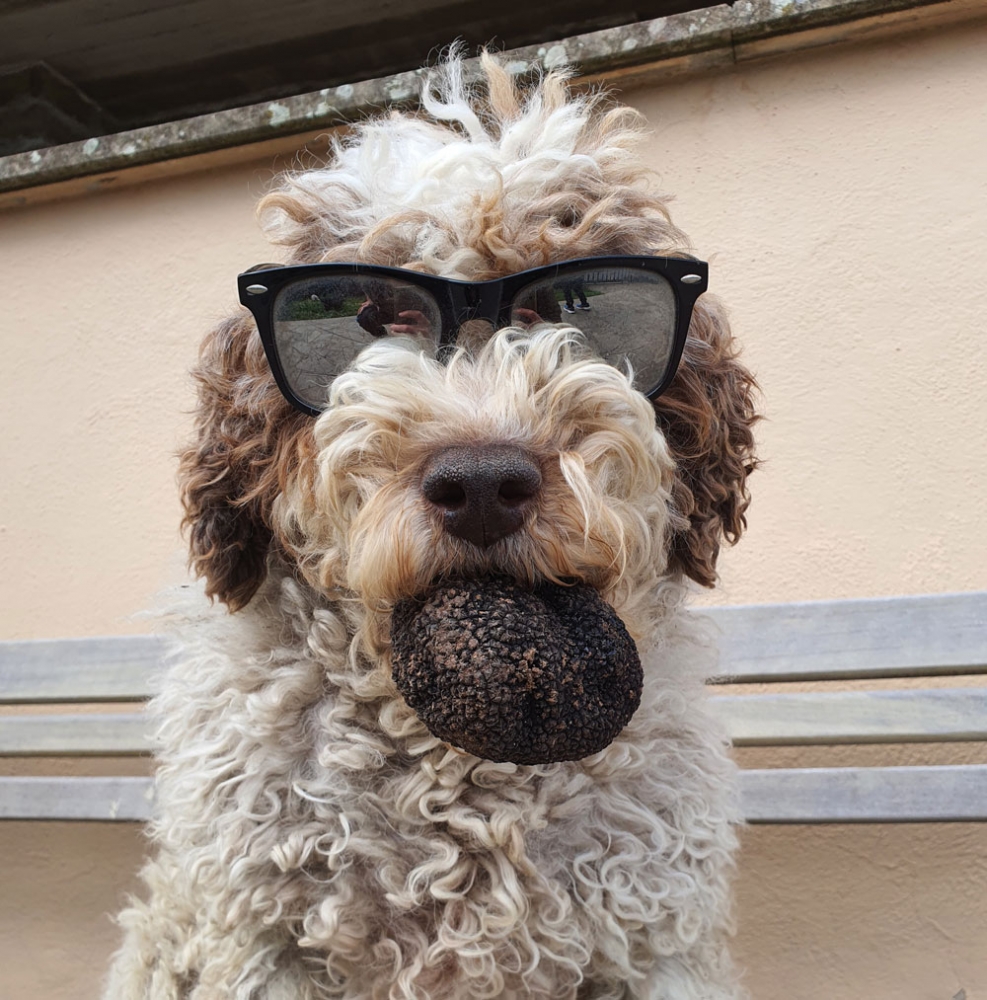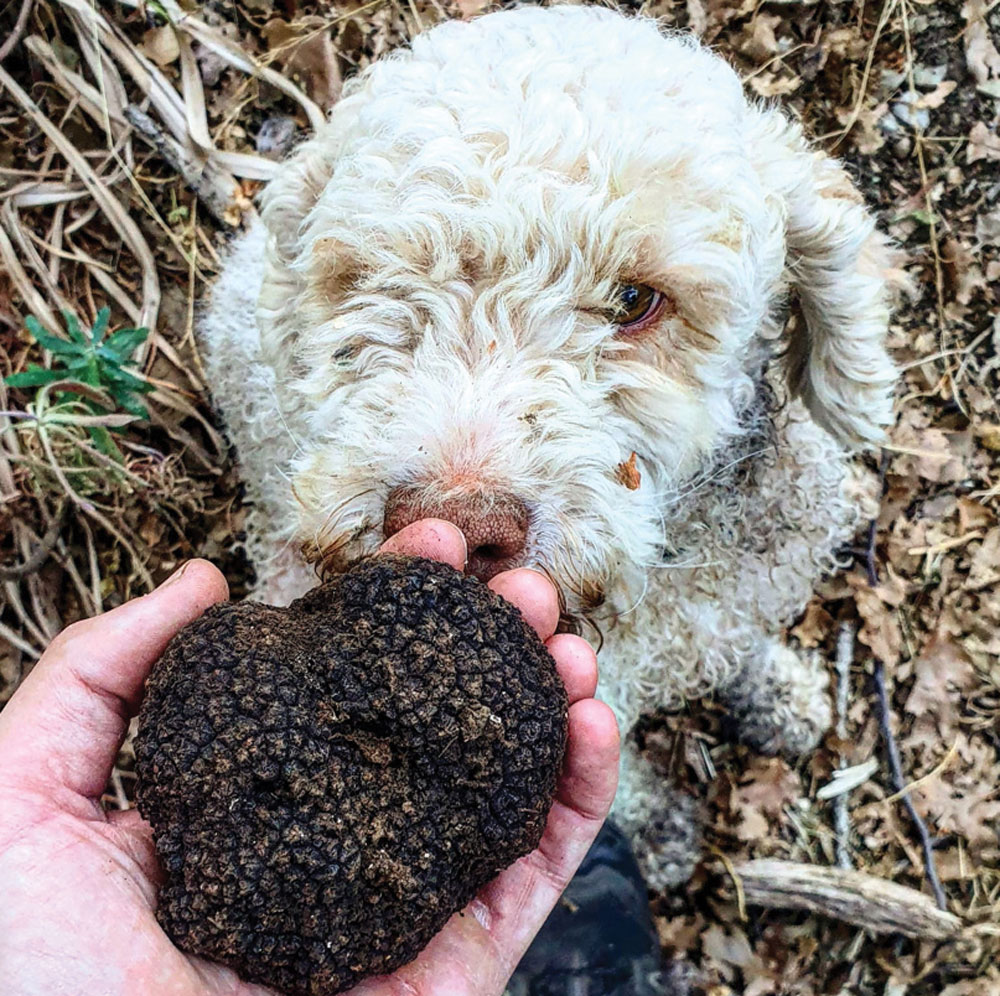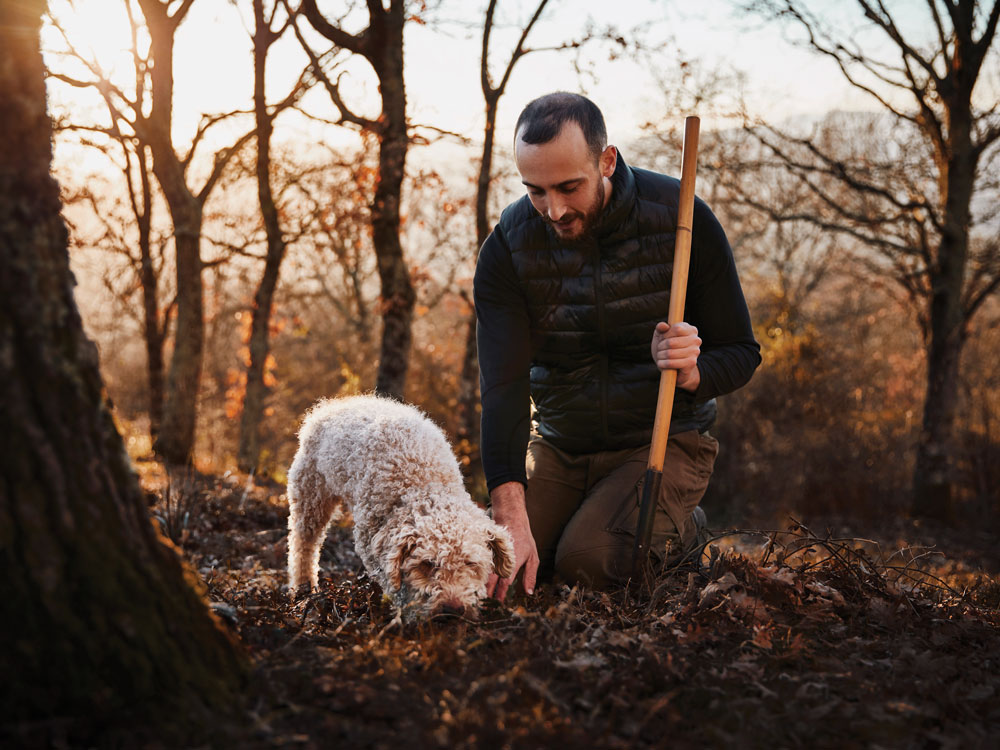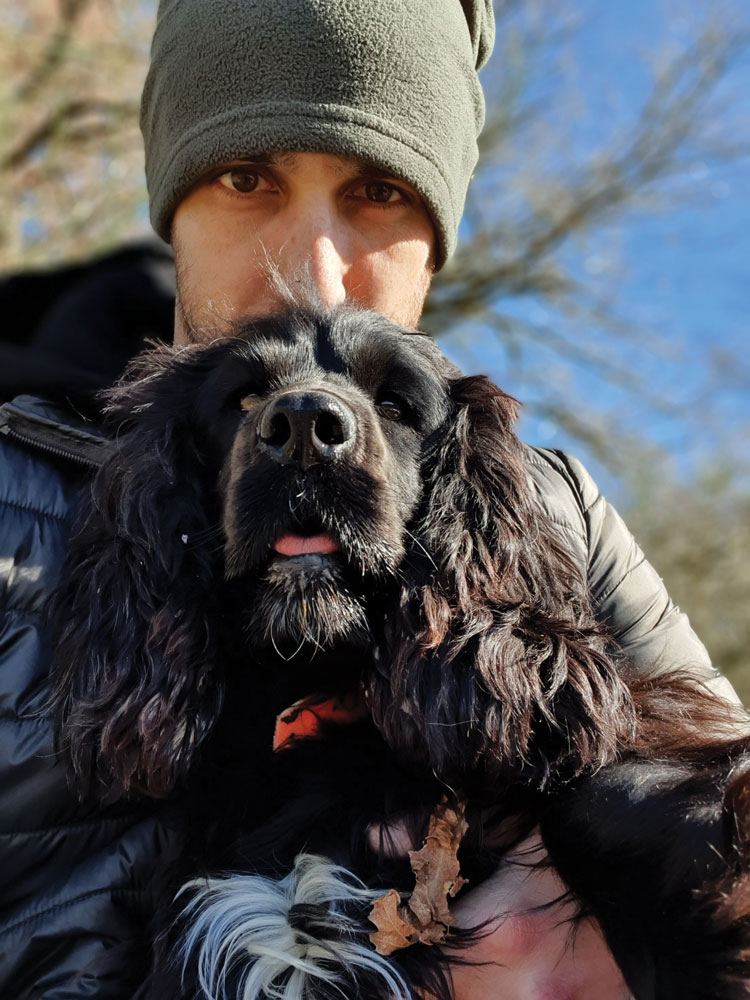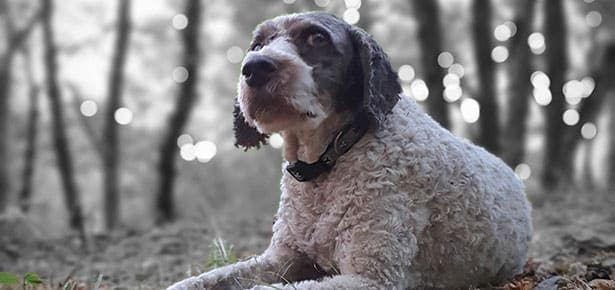
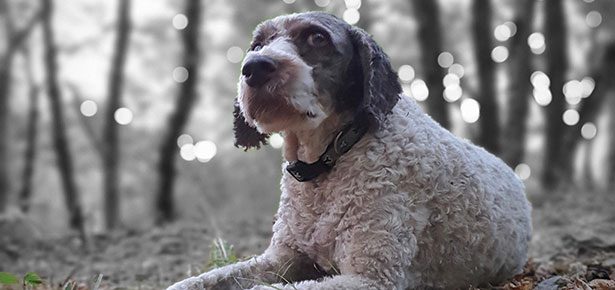
Truffle Hunting with Dogs
Canines have become the go-to companion for truffle hunting around the globe
Truffles have been a culinary delicacy for thousands of years. The tasty fungi have been a staple in the Mediterranean diet dating back to ancient times. Per Greek lore, the hard-to-find mushrooms can be credited to god Zeus and one of his powerful thunderbolts: philosopher Plutarch penned that the heat from the bolt combined with moisture in the ground created the perfect environment for truffles to grow.
Even with modern advancements, though, hunting for these prized mushrooms is an arduous task. The truffles grow underground attached to tree roots, meaning they can’t initially be seen or smelled by people.
This led humans to enlist the help of pigs, who are known for their innate sense of scent. In recent decades, however, the stout porkers have been more or less replaced by dogs.
“In the beginning, people discovered truffles through the pigs and they started to find truffles using them—until someone figured out that the dog, after a training period, could find the truffle as well,” Italian truffle hunter Matteo Lavorini explains to Modern Dog.
Canines not only have more stamina, they’re also less likely to gobble up the fancy fungi upon finding them. For context, the rare and highly sought after white Alba truffle can sell for over $2,000 a pound, while black truffle can run you over $300 a pound.
“Slowly, people stopped to find truffles with pigs, as with the dogs it’s much more convenient to find both a good amount as well as better truffle quality,” Lavorini explains, joking that fighting off a hungry 300 pound pig is also not likely a fun experience.
Lavorini is a well-known truffle hunting pro just outside of Rome, who has the help of three companions: Italian Water Dogs (or in Italian, Lagotto Romagnolo) Uzi and Julietta, along with Cocker Spaniel Wendy.
Uzi, the oldest of the trio at ten, is an expert truffle hunter, according to Lavorini. “She doesn’t like to work with other dogs, because she is jealous and wants all the attention!” he explains.
Four-year-old Julietta is also a talented pooch, who is good at finding the truffles in any condition.
He describes Spaniel Wendy, five, as “smart and a good hunter,” however, she is at times “stubborn and disobedient.”
Uzi, Julietta, and Wendy aren’t just working pups, they’re also fabulous and friendly pets who like to be cuddled after hours just like any dog.
While Lavorini says any pooch has the potential to be a hunter, certain breeds—like the Italian Water Dogs and Spaniels—just do it better. “We generally always use specific breeds that were selected for many years for this type of work—so they have the DNA for hunting,” he explains. Beagles, German Shepherds, and Poodles can also be seen as working pros online.
Lavorini himself comes from a multi-generational family of truffle hunters, starting with his grandfather Bruno Lavorini.
“I started truffle hunting because of my family—my grandfather was a truffle hunter and my father is still a hunter today. I got this passion from them as a kid, and it soon became my biggest love in life,” he says, noting his father Furio has five truffle hunting pups of his own.
Lavorini became a full-time truffle hunter at the age of 25, just under a decade ago—which began with the training of his own dogs.
“The training starts at two months—and it’s just a game for them at the beginning,” Lavorini says of the process.
“They have to learn by playing with truffles, so we start with simple exercises then build up to harder ones until they’re able to find them underground through smell,” he adds.
As with any dog training, treats play a key role.
“To motivate the dog during the training, we give a reward any time the dog does well,’” Lavorini explains. “They become super familiar with the truffle smell and they know that for making the owner happy and for getting the reward, they have to find that smell.”
There are eight types of truffles found in Italy, with the white ones being the rarest and the black ones more common (but still expensive).
“A good truffle dog is able to find all the types of truffle—even though every dog will excel with a specific one,” Lavorini shares.
While the story about Zeus’ lightning bolt is a bit far-fetched, it’s generally believed that the mushrooms began growing under trees thanks to natural evolution and a bit of science. Truffles specifically grow near the roots of certain trees—mainly willow, poplar, hazelnut, and oak—thanks to a symbiotic exchange of nutrients called ectomycorrhizae.
Generally, a truffle hunter will head out with their dogs to a forest in the early mornings or late afternoons, particularly during hot summer months. Lavorini specifically works in the countryside and mountain areas around Rome, about two hours out of the city.
“In Italy, we are allowed to go out and find truffles with a maximum of two dogs,” he explains of the law. “In the colder temperatures, dogs can work longer—so sometimes we’ll spend the day out hunting.”
Dogs don’t typically bark when they find what they’re searching for, instead going to their natural instinct: to dig.
“When the dog smells the truffles, they’ll start to dig—which is the traditional way of finding them,” he says of the actual hunting. Depending on how hard the soil is, a truffle hunter will assist with a special tool—or the dog will dig the truffle out themselves and bring it to their companion (in exchange for a treat, of course).
While Italy is the primary country where luxe truffles are found, they also grow in other European countries like Romania, Bosnia, Switzerland, and Hungary—as well as in the Pacific Northwest region of North America. Oregon hosts an annual truffle festival with the intent of fostering community among those with truffle-hunting dogs, along with two-day truffle dog training for would-be enthusiasts.
On his YouTube page, Lavorini can also be seen enjoying some of his findings—whipping up recipes like truffle pasta, truffle risotto, fried eggs with truffles and buffalo mozzarella with truffles.
“I like the classical recipes,” he says, pointing to his videos.
Beyond being a tasty status symbol, truffles are also believed to be a natural aphrodisiac— prompting more interest in them from wealthy consumers of past and present.
These days, Lavorini has grown his truffle business to be more than just hunting. He’s a wholesaler who supplies restaurants abroad, organizes truffle hunting experiences for private groups, and has a farm where he hosts truffled themed meals—but still hunts in his free time.
“It’s something you can’t stop,” he concludes.
 Matteo's Truffle Experience
Matteo's Truffle Experience
Matteo hosts a unique truffle hunting and lunch experience for visitors to the Rome area: head out to a forest just outside the city with him and his trained dogs for a two-hour excursion where you can learn all about truffle hunting with a pro.
Guests are then welcomed to join Matteo in preparing and enjoying a seven-course meal, accompanied by wine, using the freshly found fungi.
Experiences are capped at 10 participants and usually take place between 10:30 am and 4:30 pm. Priced at 90 euros per person.
Available to book via Airbnb, matteotruffles.com, Trip Advisor, or Instagram.
This article originally appeared in the award-winning Modern Dog magazine. Subscribe today!
Join the newsletter and never miss out on dog content again!
"*" indicates required fields
By clicking the arrow, you agree to our web Terms of Use and Privacy & Cookie Policy. Easy unsubscribe links are provided in every email.
